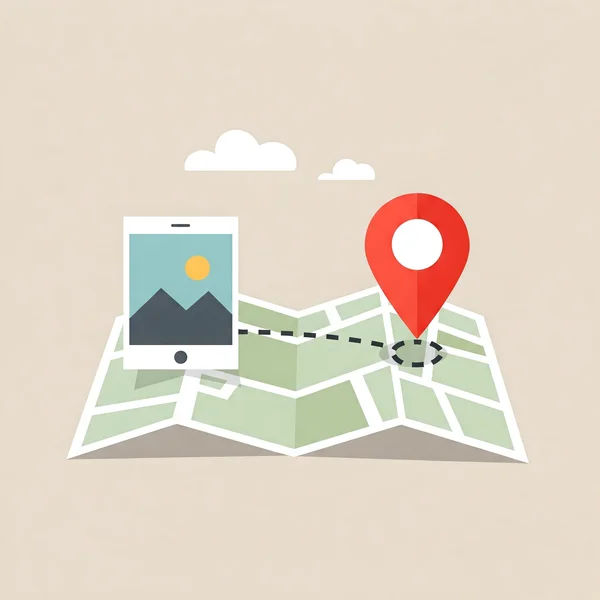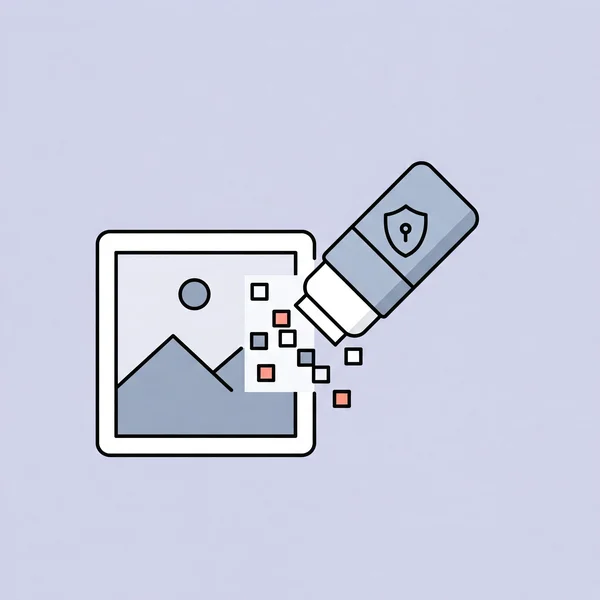EXIF Data: The Hidden Privacy Risks in Your Photos
Sharing photos online is a daily habit for many of us. But did you know that lurking within those seemingly innocent pictures could be sensitive information that compromises your image privacy? Does EXIF data show location? Absolutely, and that's just the tip of the iceberg. This article dives into the hidden dangers of EXIF data and why understanding these risks is crucial for your online privacy. Discover more about photo security by visiting our website.
Does EXIF Data Reveal Your Location? The GPS Geotagging Risk
One of the most significant image privacy concerns related to EXIF data is GPS geotagging. But what exactly is it?
What is GPS Geotagging?
GPS geotagging is the process of adding geographical identification metadata to various media such as a geotagged photograph or video. This data usually consists of latitude and longitude coordinates, though it can also include altitude, bearing, distance, accuracy data, and place names. Essentially, it pinpoints the exact GPS location where the photo was taken.
How Geotags Get into Your Photos
Most modern smartphones and digital cameras have built-in GPS capabilities. If location services are enabled for your camera app, the device automatically records the precise coordinates and embeds them into the photo's EXIF data the moment you press the shutter button. Many users aren't even aware this feature is active, inadvertently creating a detailed map of their movements embedded within their digital photos.
The Dangers of Sharing Location Data
Sharing photos containing this embedded GPS location data online can have serious consequences for your photo security. Imagine posting a picture taken in your home – you might unknowingly be broadcasting your home address to the world. Similarly, photos from your workplace, favorite hangouts, or even your children's school can reveal patterns in your routine, making you vulnerable to stalking, burglary, or other unwanted attention. Protecting your online privacy means being mindful of this hidden information.

Other Sensitive Information Hidden in EXIF
While GPS location data poses a significant threat, it's not the only sensitive information hiding in your photo's metadata. Can you remove EXIF data from a photo? Yes, and you might want to consider it after learning what else is stored.
Device Identifiers
EXIF data often includes the make, model, and sometimes even the unique serial number of the camera or smartphone used. This device information could potentially be used to link different photos to the same device or even identify the owner in certain circumstances.
Software Information
Details about the software used to view or edit the photo, including version numbers, can also be embedded. While seemingly harmless, this might offer clues to sophisticated attackers about potential software vulnerabilities.
Hidden Notes and Usernames
Some cameras or software allow users to add notes or captions directly into the EXIF data. Occasionally, usernames or other personally identifiable information might be inadvertently included, further compromising data protection.
![]()
Understanding these hidden details emphasizes the need to manage your image metadata carefully.
How EXIF Leaks Impact Online Privacy
The risks associated with EXIF data aren't just theoretical. There have been numerous real-world incidents highlighting the dangers and impacting online privacy.
Case Studies of Privacy Breaches
News reports have documented cases where journalists or activists were tracked down using the GPS location data embedded in photos they shared online. Similarly, celebrities have had their private residences identified through seemingly innocuous photos posted on social media. These incidents underscore the critical importance of photo security.
Links to Cyberstalking and Harassment
Cyberstalkers can exploit EXIF data to monitor victims' movements and routines, leading to targeted harassment and intimidation. The ease with which this sensitive information can be accessed makes it a potent tool for those with malicious intent. How can we protect our data protection?

Threats to Physical Safety
In the most extreme cases, leaked GPS location data has been linked to physical harm, such as burglary or home invasion, as perpetrators can determine when individuals are away from home based on their shared photos.
Who is Vulnerable? Assessing Your Personal Risk
While everyone who shares photos online faces some level of risk, certain groups are more vulnerable than others.
High-Risk Groups
Individuals whose work involves sensitive locations or controversial topics, like journalists and activists, face heightened risks if their movements can be tracked through image metadata.
Everyday Social Media Users
However, even casual users sharing photos of family, friends, and daily life can inadvertently expose sensitive information. Think about photos taken at home, school, or regular hangouts – each potentially reveals a piece of your online privacy puzzle.
Evaluating Your Sharing Habits
It's crucial to assess your own photo-sharing habits. Do you automatically upload photos with GPS location enabled? Do you share photos widely on public platforms? Understanding your personal risk level is the first step towards better data protection.
Protecting Your Image Privacy: The Need for a Metadata Remover
Given the potential dangers, simply being aware isn't enough. Proactive management of your EXIF data is essential for safeguarding your image privacy. This is where a metadata remover becomes invaluable.
The Importance of Proactive Management
Taking control of your image metadata before sharing photos online is the most effective way to mitigate privacy risks. Instead of relying on platforms to strip data (which isn't always guaranteed or complete), you should manage it at the source.
How Metadata Removers Work
A metadata remover is a tool specifically designed to remove EXIF data and other metadata from your image files. These tools analyze the file, identify the embedded data fields (like GPS location, camera settings, etc.), and securely erase them, leaving you with a 'clean' image file that's safer to share.
Key Step for Ensuring Image Privacy
Using a reliable metadata remover is a crucial step for anyone concerned about their online privacy and photo security. It empowers you to control what information you share along with your pictures. Considering a metadata remover? Explore options on our site.

Your Top Questions About EXIF Data Privacy Answered
Can someone track me using my photos' EXIF data?
Yes, if your photos contain GPS location data (geotags), someone could potentially determine where the photo was taken and potentially track your movements over time if you share multiple geotagged photos. This highlights a major image privacy concern.
Does social media remove EXIF data automatically?
Some social media platforms automatically remove EXIF data (or parts of it) upon upload to protect user privacy, but policies vary widely and can change. It's often unreliable and not comprehensive. Relying solely on platforms is risky for your photo security. It's always safer to remove metadata from photos yourself before uploading using a tool like a metadata remover.
Is it possible to completely remove EXIF data?
Yes, using dedicated metadata remover tools, it's possible to completely remove EXIF data from your image files. Tools available on our site are designed for this purpose, helping you enhance your data protection.
What's the difference between viewing and removing metadata?
Viewing metadata allows you to see the information embedded in a photo (like using an exif data viewer). Removing metadata, using a metadata remover, permanently deletes this information from the file to protect your image privacy.
Take Action to Safeguard Your Online Privacy
The convenience of sharing digital photos comes with hidden responsibilities. EXIF data, particularly GPS location information, poses a genuine threat to your image privacy and online privacy. Understanding these risks is the first step, but taking action is crucial. Regularly check the metadata embedded in your photos and make informed decisions about what you share. Utilizing a trusted metadata remover before uploading sensitive images online is a simple yet powerful way to enhance your photo security.
Don't leave your privacy to chance. Consider how you manage your photo metadata.